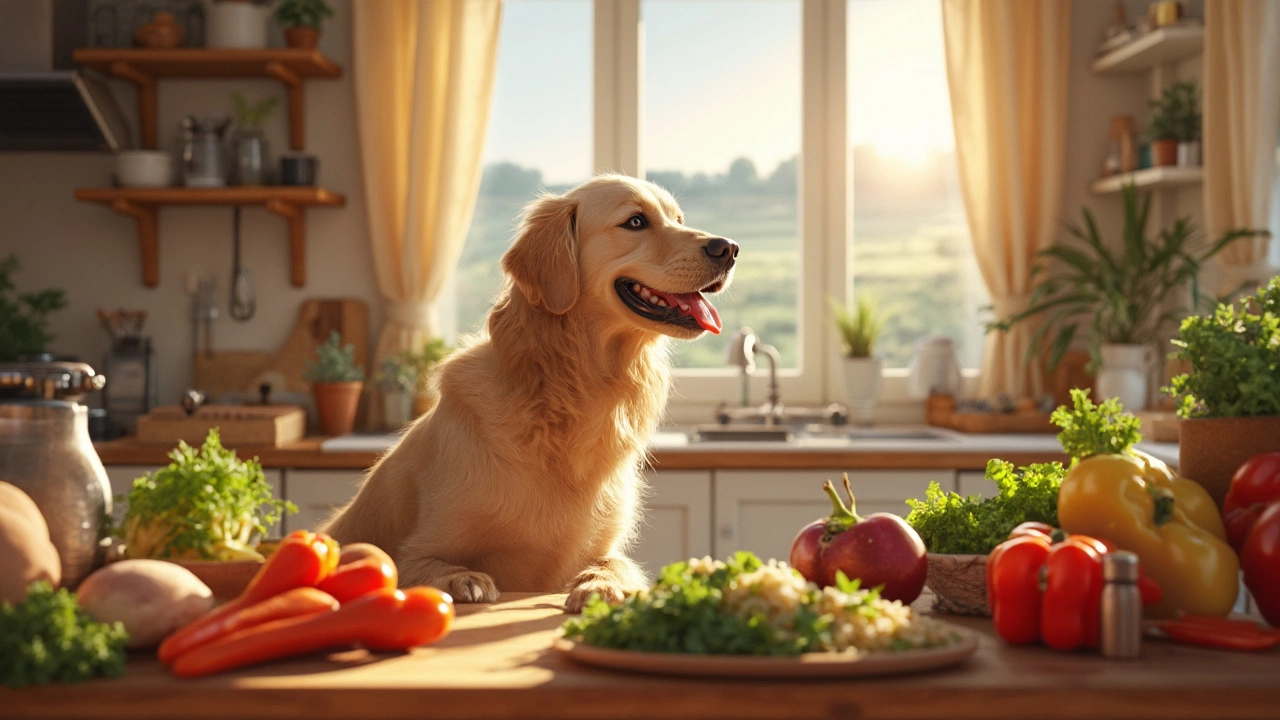Balanced Dog Diet: Simple Tips for a Healthier Pup
Ever wonder if you’re really feeding your dog the right stuff? A balanced dog diet isn’t a mystery—it’s about mixing the right proteins, carbs, fats, and vitamins in the right amounts. Think of your dog’s bowl like a plate for a kid: you need variety, proper portions, and quality ingredients to keep them strong and happy.
What Makes a Diet Balanced?
First, focus on the three main building blocks:
- Protein: This is the core of any dog meal. Good sources are chicken, turkey, beef, lamb, and fish. Aim for at least 18‑25% protein in dry food, or a cooked homemade meal that feels like a hearty stew.
- Carbohydrates: Dogs don’t need a lot, but carbs give them energy and help with digestion. Sweet potatoes, brown rice, and oats are easy, low‑glycaemic options.
- Fats: Healthy fats support skin, coat, and brain health. Look for fish oil, flaxseed, or chicken fat. Keep total fat around 8‑15% of the diet.
Round out the mix with veggies (carrots, peas, green beans) and a pinch of fruit (blueberries, apple slices) for antioxidants. Don’t forget calcium—bones or a calcium supplement keep teeth strong.
Portion Sizes and Feeding Frequency
How much you feed depends on size, age, activity, and metabolism. A quick rule: take your dog’s weight in pounds, multiply by 0.03‑0.04, and you get daily calories. Split that into two meals for adult dogs; puppies often need three to four smaller meals.
Watch the bowl: if your dog leaves food, cut back a little. If they’re begging or gaining weight, add a bit more protein and reduce carbs. Consistency is key—keep meal times around the same hour each day to support digestion.
Homemade meals are a great way to control ingredients, but they need balance. A simple recipe: 40% lean meat, 30% cooked sweet potato, 20% mixed veggies, and 10% rice or oats. Add a teaspoon of fish oil per 20 lb of body weight for extra omega‑3s.
Remember to rotate proteins every few weeks. Switching from chicken to beef or fish keeps the diet interesting and reduces the chance of food sensitivities.
Got an older dog? Their needs shift to more joint‑supporting nutrients like glucosamine and less calories. For active working breeds, increase the carb portion slightly for extra stamina.
Finally, water is non‑negotiable. Fresh, clean water should be available all day, especially if you’re feeding dry kibble.
Balancing your dog’s diet doesn’t have to be complicated. Pick quality protein, add easy carbs and healthy fats, sprinkle in veggies, adjust portions, and you’ve got a winning formula that keeps tails wagging.

Best Homemade Dog Food: What to Feed Your Pup Safely
Thinking about making your dog's meals at home? This article breaks down what homemade food really works best for dogs, which ingredients you should use or avoid, and how to make sure your pup is getting all the nutrients they need. Get easy, practical recipes and pro tips to keep your dog healthy. Learn what vets usually recommend and get answers to common questions real dog owners have. Skip the guesswork and help your furry friend thrive with every meal.
View more